Bergamo
| Bergamo | |
|---|---|
| — Comune — | |
| Comune di Bergamo | |
|
|
|
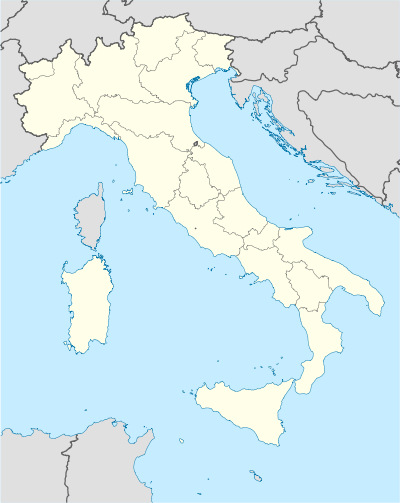 Bergamo
|
|
| Coordinates: | |
| Country | Italy |
| Region | Lombardy |
| Province | Bergamo (BG) |
| Government | |
| - Mayor | Franco Tentorio (The People of Freedom) |
| Area | |
| - Total | 38.7 km2 (14.9 sq mi) |
| Elevation | 249 m (817 ft) |
| Population (31 December 2009) | |
| - Total | 119,234 |
| - Density | 3,081/km2 (7,979.7/sq mi) |
| Demonym | Bergamaschi |
| Time zone | CET (UTC+1) |
| - Summer (DST) | CEST (UTC+2) |
| Postal code | 24100 |
| Dialing code | 035 |
| Patron saint | Saint Alexander |
| Saint day | 26 August |
| Website | Official website |
Bergamo listen (Bèrghem in Eastern Lombard listen) is a town and comune in Lombardy, Italy, about 40 km northeast of Milan. The comune is home to approximately 120,000 inhabitants. It is served by the Orio al Serio Airport, which also serves the Province of Bergamo, and to a lesser extent the metropolitan area of Milan. The foothills of the Alps begin immediately north of the town.
Contents |
History
Early years
Bergamo occupies the site of the ancient town of Bergomum, founded as a settlement of the Celtic tribe of Cenomani. In 49 BC it became a Roman municipality, containing circa 10,000 inhabitants at its peak. An important hub on the military road between Friuli and Raetia, it was destroyed by Attila in the 5th century.
Middle Ages
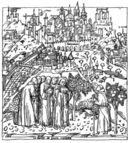
From the 6th century Bergamo was the seat of one of the most important Lombard duchies of northern Italy, together with Brescia, Trento and Cividale del Friuli: its first Lombard duke was Wallaris. After the conquest of the Lombard Kingdom by Charlemagne, it became the seat of a county under one Auteramus (died 816).
From the 11th century onwards Bergamo was an independent commune, taking part in the Lombard League which defeated Frederick I Barbarossa in 1165. Caught in the bitter fights between Guelphs and Ghibellines, led in the city by the Colleoni and the Suardi respectively, from 1264 Bergamo was intermittently under the rule of Milan. In 1331 it gave itself to John of Bohemia, but later the Visconti of Milan reconquered it.
Rinascimento and modern era
After a short conquest by the Malatesta in 1407, in 1428 it fell under the control of the Venetian Republic, remaining part of it until 1797. Between 1797 and 1815, Bergamo and its territory were included in the political entities born in North Italy during the French and Napoleonic dominion. Notably, the Venetians fortified the higher portion of the town (see Main sights section).
XIX and XX century
In 1815, it was assigned to the Austrian Empire. Giuseppe Garibaldi freed it in 1859 during the Second Italian War of Independence, when Bergamo became part of the Kingdom of Italy. During the 20th century Bergamo become one of Italy's most industrialized cities. It is also one of the few Italian cities that did not suffer major destruction during World War II.
Climate
| Climate data for Bergamo | |||||||||||||
|---|---|---|---|---|---|---|---|---|---|---|---|---|---|
| Month | Jan | Feb | Mar | Apr | May | Jun | Jul | Aug | Sep | Oct | Nov | Dec | Year |
| Average high °C (°F) | 5.5 (41.9) |
7.89 (46.2) |
12.11 (53.8) |
16.28 (61.3) |
20.89 (69.6) |
25 (77.0) |
27.72 (81.9) |
26.72 (80.1) |
23.28 (73.9) |
17.5 (63.5) |
10.72 (51.3) |
6.28 (43.3) |
16.67 (62.0) |
| Average low °C (°F) | -1.89 (28.6) |
0.11 (32.2) |
3.22 (37.8) |
6.5 (43.7) |
10.72 (51.3) |
14.39 (57.9) |
17 (62.6) |
16.61 (61.9) |
13.78 (56.8) |
9 (48.2) |
3.5 (38.3) |
-1.11 (30.0) |
7.67 (45.8) |
| Precipitation mm (inches) | 71 (2.8) |
64 (2.5) |
84 (3.3) |
89 (3.5) |
127 (5.0) |
112 (4.4) |
109 (4.3) |
130 (5.1) |
94 (3.7) |
109 (4.3) |
112 (4.4) |
56 (2.2) |
1,156 (45.5) |
| Source: Intellicast[1] | |||||||||||||
Music
Bergamo has a prominent place in music history. The large Romanesque church of Santa Maria Maggiore, begun in 1137, had a continuous and well-documented tradition of music teaching and singing for more than eight hundred years. When the town was under Venetian control, the musical style of the Venetians was imported as well; in particular, a large instrumental ensemble grew up to support the choral singing. Composers such as Gasparo Alberti produced music with polyphony using two organs, brass and viols, a style usually associated with Venice, but which flourished in the fine acoustic environment of Santa Maria Maggiore.
The city lent its name to a style of folk dance known as bergamask peculiar to the peoples of that region. Known as bergomasci and renowned for their buffoonery, the fool Bottom in Shakespeare's A Midsummer's Night's Dream refers to their Bergomask dance. This unconventional form gave Debussy a vehicle for the dissonances and irregular intervals of his "Suite bergamasque".
Prominent musicians born in Bergamo include Gaetano Donizetti, Pietro Locatelli, Antonio Lolli, Gianluigi Trovesi, Roby Facchinetti, Fabrizio Frigeni and Gianandrea Gavazzeni. Alessandro Grandi, one of the most progressive composers of the early 17th century after Monteverdi, was maestro di cappella there until his death in the plague of 1630; Tarquinio Merula, an even more progressive composer, and one of the founders of the early sonata, took over his post.
Notable natives
Bergamo was the hometown and last resting place of Enrico Rastelli, a highly technical and world famous juggler who lived in the town and, in 1931, died there at the early age of 34. There is a life-sized statue to Rastelli within his mausoleum. A number of painters were active in the town as well; among these were Giovanni Paolo Cavagna, Francesco Zucco, and Enea Salmeggia, each of whom painted works for the church of Santa Maria Maggiore.
Main sights

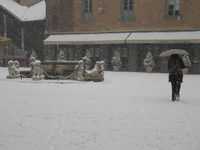
The town has two centres: "Città alta" (upper city), a hilltop medieval town, surrounded by 17th century cyclopic defensive walls, and the "Città bassa" (lower city). The two parts of the town are connected by funicular/cable car, roads, and foot-paths (the most convenient being immediately adjacent to the funicular station). Parking spaces are very limited in the upper city.
Città alta
The upper city, surrounded by Venetian walls built in the 17th century, forms the historic centre of Bergamo.
Città Alta is an extremely expensive place to live in, with properties being sold for a minimum of 2,000,000 euro.
This has numerous places of interest including:
- Cittadella (Citadel), built by the Visconti in the mid 14th century.
- Piazza Vecchia (old square)
- Palazzo della Ragione. This was the seat of the administration of the city in the age of the communes. Currently it houses a selection of paintings from the Accademia Carrara. Erected in the 12th century, it was rebuilt in the late 16th century by Pietro Isabello. The façade has the lion of St. Mark over a mullioned window, testifying to the long period of Venetian dominance. The atrium has a well-preserved 18th century sundial.
- Palazzo Nuovo (Biblioteca Angelo Mai). It was designed by Vincenzo Scamozzi in the early 17th century but only completed in 1928.
- Basilica di Santa Maria Maggiore (Saint Mary Major). It was built from 1137 on the site of a previous religious edifice of the 7th century. Construction continued until the 15th century. Of this first building the external Romanesque structure and the Greek cross plan remain. The interior was extensively modified in the 16th and 17th centuries. The dome has frescoes by Giovanbattista Tiepolo. Noteworthy are the great Crucifix and the tomb of Gaetano Donizetti.
- Cappella Colleoni (Colleoni chapel), annexed to Santa Maria Maggiore, is a masterwork of Renaissance architecture and decorative art. It contains the tomb of the condottiere Bartolomeo Colleoni.
- The Battistero (Baptistry), an elegant octagonal building dating from 1340.
- Bergamo Cathedral (Duomo). This was built in the late XVII century with later modifications.
- Rocca (Castle). It was begun in 1331 on the hill of Sant'Eufemia by William of Castelbarco, vicar of John of Bohemia, and later completed by Azzone Visconti. A wider citadel was added, but is now partly lost. The Venetians built a large tower in the Rocca, as well as a line of walls (Mura Veneziane) 6,200 metres long.
- San Michele al Pozzo Bianco. Built in the 12th century, this church contains a wealth of frescos from the 12th to the 16th centuries, including paintings by Lorenzo Lotto.
- Museo Civico Archeologico (Archaeological Civic Museum) This is housed in the Cittadella.
- Museo di Scienze Naturali Enrico Caffi (Caffi Natural Science Museum) This is also housed in the Cittadella.
- Orto Botanico di Bergamo "Lorenzo Rota" (botanical garden).
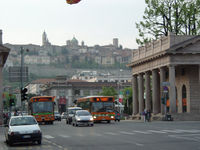
Città bassa
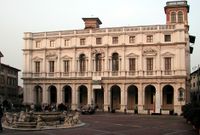
The lower city is the modern centre of Bergamo. At the end of the nineteenth century Città Bassa was composed of Borghi, the residential houses built along the main road that linked Bergamo with the other cities of Lombardy. The main boroughs were Borgo Palazzo along the road to Brescia, Borgo San Leonardo along the road to Milan and Borgo Santa Caterina along the road to Valle Seriana. The city rapidly expanded during the twentieth century. In the first decades, the municipality erected major buildings like the new courthouse and various administrative offices in the lower part of Bergamo in order to create a new center of the city. After World War II and during the so called miracolo economico (economic boom) many residential buildings were constructed in the lower part of the city which are now divided into several neighborhoods such as Longuelo, Colognola, Malpensata and Bergamo among many others. The shopping district developed shortly after, now commonly known as the street the shops are located on Via 20 Settembre.
Of artistic importance in Città Bassa are:
- Pinacoteca dell'Accademia Carrara (picture museum of Carrara academy) This is currently closed for restoration and a selection of its paintings is exhibited in the Palazzo Ragione in Città Alta.
- Galleria d'Arte Moderna e Contemporanea (gallery of modern and contemporary art), known as GAMEC.
Demographics
In 2007, there were 115,781 people residing in Bergamo (in which the greater area has more than 300 000 inhabitants), located in the province of Bergamo, Lombardia, of whom 46.7% were male and 53.3% were female. Minors (children ages 18 and younger) totalled 16.32 percent of the population compared to pensioners who number 23.67 percent. This compares with the Italian average of 18.06 percent (minors) and 19.94 percent (pensioners). The average age of Bergamo residents is 45 compared to the Italian average of 42. In the five years between 2002 and 2007, the population of Bergamo grew by 1.92 percent, while Italy as a whole grew by 3.85 percent[2]. The current birth rate of Bergamo is 8.72 births per 1,000 inhabitants compared to the Italian average of 9.45 births.
As of 2006, 90.47% of the population was Italian. The largest immigrant group comes from other European nations (the largest being Albania, and Romania): 3.15%, Americas (mostly from Cochabamba, Bolivia): 2.37%, sub-saharan Africa: 1.41%, and North Africa: 1.23%. Currently one-fifth of the babies born in Bergamo has at least one foreign parent. The city is predominantly Roman Catholic and also host the see of a Diocese of Bergamo, but due to immigration now has some Orthodox Christian, Muslim, and Protestant adherents.
Economy
As capital and main town of its province, Bergamo hosts the public administration offices of provincial interest. In the past, many factories were in the commune territory, mainly for electrical components, industrial mechanics and publishing businesses, but have then moved outward. In the town three large corporations are still based:
- Italcementi SpA, general headquarters of the 5th largest cement producer in the world.
- UBI group, ex BPU e Banca Popolare di Bergamo - Credito Varesino, general headquarters of the 4th largest italian bank group.
- Brembo, general headquarters and plants of the manufacturer of automotive brake systems' leader, especially for high-performance cars and motorcycles.
- Tenaris, is a global manufacturer and supplier of seamless and welded steel pipe products and provider of pipe handling, stocking and distribution services to the oil and gas, energy and mechanical industries.
- ABB SpA, offices and plants of a multinational corporation operating mainly in the power and automation technology areas..
Miscellaneous
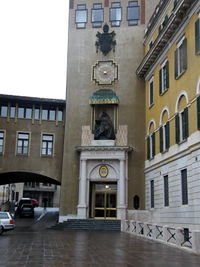
- Angelo Roncalli, later to become Pope John XXIII and born in the province of Bergamo, studied in the diocesan minor seminary of Bergamo.
- The city is home to Costantino Rocca, the only Italian golfer to play in the Ryder Cup.
- The town hosted the seventh Congres Internationaux d'Architecture Moderne in 1951.
- The town has a football team called Atalanta which is playing in the 2010-11 Serie B league.
- For about 55 years, from 1945 to 2000, the town was the site of the headquarters of the Mechanized Infantry Brigade "Legnano"
- Every year the town used to host an important poetry event called "BergamoPoesia"
- Giuseppe Donizetti also known as Donizetti Pasha, the eldest brother of Gaetano Donizetti, who became Instructor-General of the Ottoman Military Bands under Sultan Mahmud II and Sultan Abdulmecid was born in Bergamo in 1788.
- The town has a woman's volleyball team named Foppapedretti Bergamo.
- The city is also home to the Bergamo Lions American football team, one of the most successful European Football League history, winning multiple Eurobowls.
- Bergamo is the traditional birthplace of Arlecchino and Brighella, two popular characters of the commedia dell'arte
- Bergamo is crossed by river Morla
International relations: Twin towns
 Greenville, SC, United States
Greenville, SC, United States Pueblo, United States
Pueblo, United States Mulhouse, France
Mulhouse, France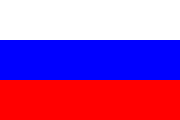 Tver', Russia
Tver', Russia Pereira, Colombia
Pereira, Colombia Bengbu, People's Republic of China
Bengbu, People's Republic of China Buenos Aires, Argentina
Buenos Aires, Argentina Cochabamba, Bolivia (since 2008)
Cochabamba, Bolivia (since 2008)
Bergamo set a relationship of decentralized cooperation with the municipality of Kakanj, Bosnia-Herzegovina, in the late 1990s. Procedures for town twinning were set up in 1997 but never completed.
Further reading
- Christopher Carlsmith. A Renaissance Education: Schooling in Bergamo and the Venetian Republic, 1500–1650 (University of Toronto Press; 2010) 436 pages; Considers how humanism, Tridentine Catholicism, and Venetian power affected education in the northeastern Italian city
See also
References
- Notes
- ↑ "Bergamo historic weather averages". Intellicast. http://www.intellicast.com/Local/History.aspx?location=ITXX0005. Retrieved 22 September 2009.
- ↑ "Statistiche demografiche ISTAT". Demo.istat.it. http://demo.istat.it/bil2007/index.html. Retrieved 2009-05-05.
- ↑ "Town twinnings and international relations" (Italian)
External links
- Bergamo official website (Italian)
- Turismo Bergamo
- Università degli Studi di Bergamo website (English)
|
|||||||
